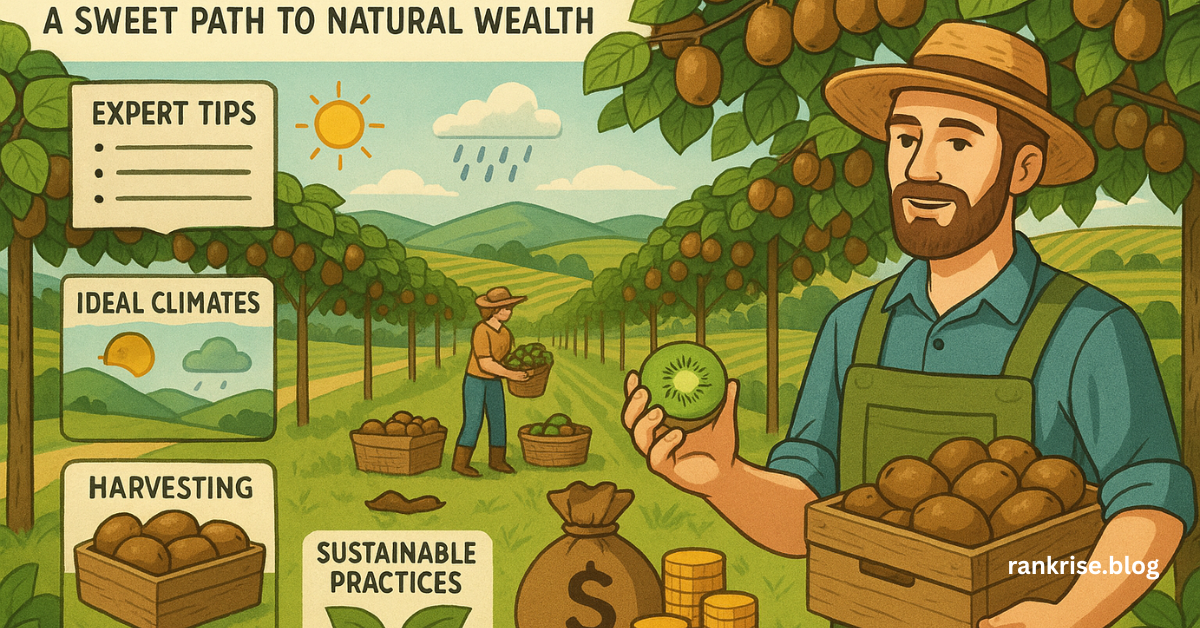Kiwifarm refers to the cultivation of the famous kiwifruit, a sweet and tangy fruit loved around the world. The kiwifruit, originally from China, is grown on vines much like grapes. In the 1950s, New Zealand started commercial production, and since then, kiwifarming has become popular across countries like Italy and China. Thanks to its rich flavor and health benefits, kiwi farming has become a profitable business. Today, kiwifruit farms supply millions of juicy fruits to markets and homes across the globe.
Best Conditions to Grow a Kiwifarm
For a successful kiwifarm, you need the right weather and soil. Kiwifruit grows best in temperate climates where summers are warm and winters are cool but not freezing. A temperature range of 10°C to 25°C is ideal. Kiwi plants love fertile, well-drained soil and need protection from strong winds and heavy frost. Places at elevations between 1,500 and 2,500 meters are considered perfect for kiwifruit farming. Consistent irrigation and proper sunlight make the vines grow faster and produce better quality fruits.
How to Start a Kiwifarm: Easy Steps
Starting a kiwifarm is exciting but requires planning. First, you must prepare the soil by making sure it drains well and is rich in organic material. Kiwifruit plants are usually grown from grafted seedlings for better fruit quality. Since kiwi vines are dioecious, you need both male and female plants for pollination. Generally, one male plant is planted for every six female plants. Trellis systems, like pergolas, are used to train the vines properly, making harvesting easier and boosting production.
Caring for Your Kiwifarm for Healthy Vines
Maintaining a healthy kiwifarm takes constant care. Kiwi plants need regular watering, especially during dry seasons. Using drip irrigation is the best method as it saves water and keeps the roots moist. Fertilization is another important part of kiwifarming; applying nitrogen, potassium, and phosphorus in balanced amounts ensures strong growth. Pruning old or crowded vines improves air circulation and sunlight exposure. Keeping an eye out for pests and diseases like root knot nematodes and PSA bacteria is crucial for a thriving kiwi farm.
Harvesting Kiwifruit the Right Way
Harvesting kiwifruit requires careful timing. Kiwi fruits are usually picked when they are firm but have reached the right size and sugar levels. Harvest time varies depending on the location but typically falls between September and November. The fruits are handpicked gently to avoid bruising. Once harvested, kiwifruits can be stored for weeks under cold conditions, keeping them fresh for markets. Ripening happens naturally at room temperature. For commercial kiwi farms, quick and safe storage after harvest is the key to delivering top-quality fruit.
Protecting Your Kiwifarm from Pests and Diseases
Pests and diseases can hurt a kiwifarm if not managed properly. One common threat is the PSA bacteria, which damages vines and reduces yield. To prevent this, farmers prune infected branches and spray appropriate treatments. Root knot nematodes are another enemy that attacks the plant’s roots. Good farm hygiene, proper spacing between plants, and regular inspections help control pest problems. Natural remedies and organic farming methods are also becoming popular in kiwifruit farming, offering safer ways to protect the crops and the environment.
Why Kiwifarming is a Profitable Business
Kiwifarming offers a great chance to earn a steady income, especially in areas where the climate is right. A healthy kiwi farm can produce fruits for up to 20 years, providing long-term profits. With the rising demand for nutritious and exotic fruits, kiwifruit has gained popularity in both local and international markets. Countries like New Zealand, Italy, and China make millions from kiwifruit exports. Besides being profitable, kiwi farming supports rural development by creating jobs and encouraging sustainable agricultural practices.
Conclusion: The Bright Future of Kiwifarms
The future of kiwifarms looks very promising. As people become more health-conscious, the demand for vitamin-rich fruits like kiwifruit keeps growing. With the right care, kiwifarming is not only rewarding but also environmentally friendly. Learning modern farming techniques, using organic practices, and protecting plants from pests will help farmers succeed. Whether you are planning to start a small farm or expand a commercial one, investing in kiwifarming today can bring sweet rewards for many years to come.
FAQs About Kiwifarm
What is a kiwifarm?
A kiwi farm is a farm where kiwi fruits are grown on vines under specific climate and soil conditions.
Which countries grow the most kiwifruit?
China, New Zealand, and Italy are among the top kiwifruit-producing countries.
What climate is best for kiwi farming?
A temperate climate with mild winters and warm summers is ideal for growing kiwifruit.
How long does a kiwifruit plant live?
With good care, a kiwifruit vine can produce fruit for up to 20 years or more.
When is kiwifruit harvested?
Depending on the region, kiwifruit is usually harvested between September and November.
What pests affect kiwi farm crops?
Common threats include root knot nematodes and PSA bacteria, both of which can damage the plants.Is kiwi farming profitable?
Yes, kiwi farming can be very profitable due to the fruit’s high demand and long shelf life.



